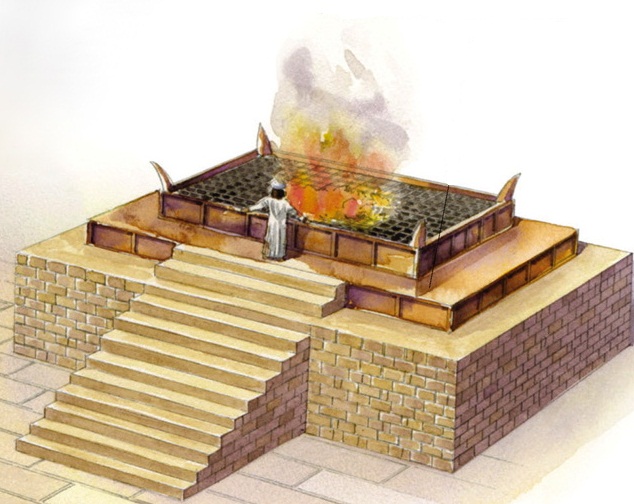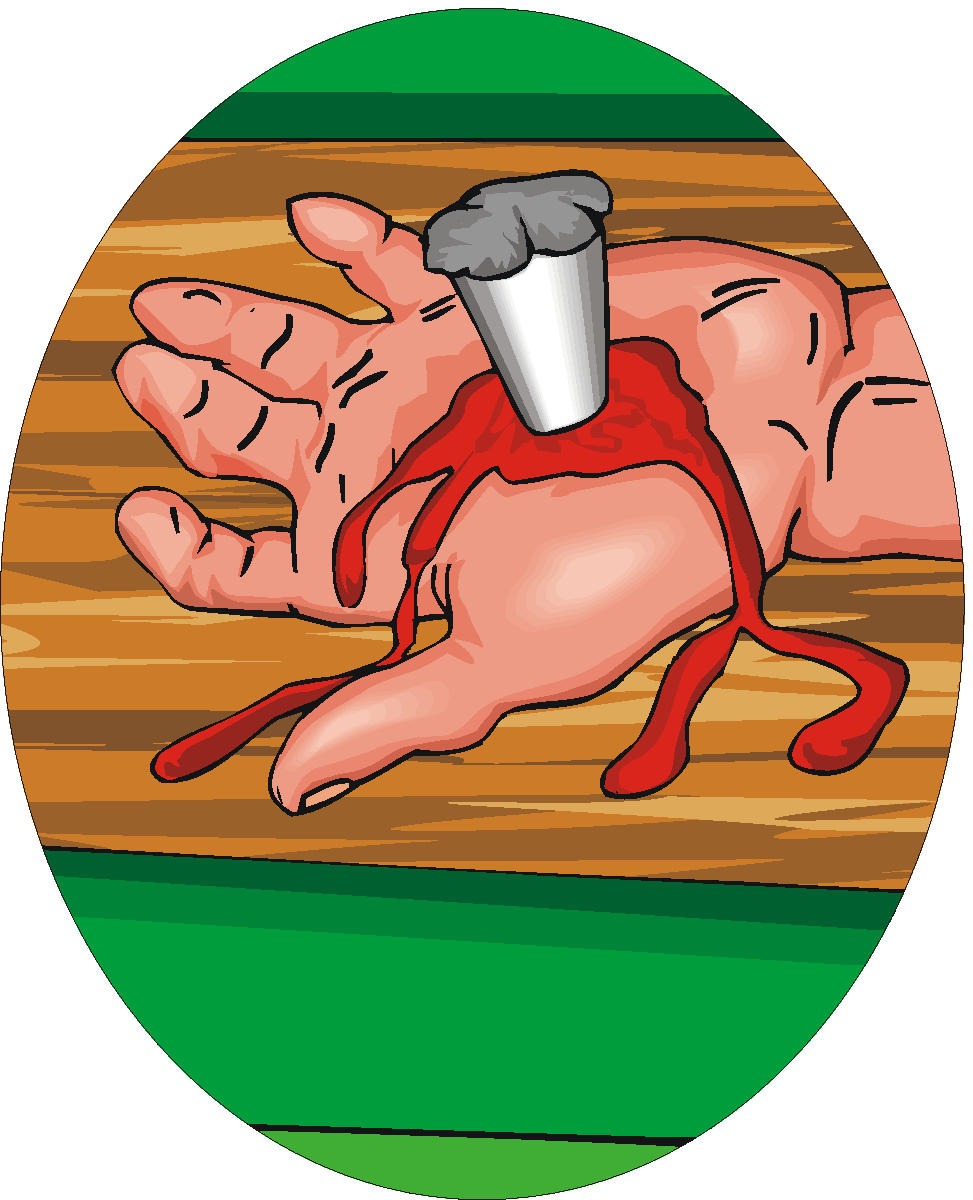Tag Archives: Sacrificial System
Leviticus Chapters 1 to 7—What Was the Purpose of the Sacrificial System?
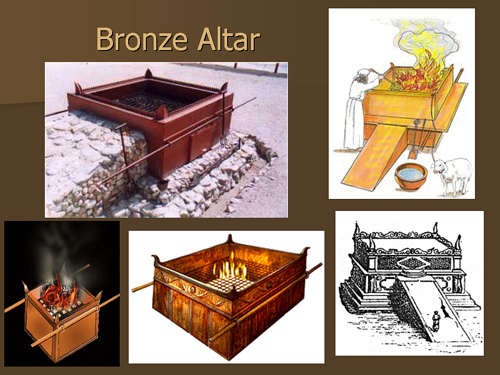
The concept of animal sacrifices may be a hard for modern people to comprehend—especially for those who are squeamish when it comes to death and blood. This ancient ritual, rooted in the nomadic lifestyles of the inhabitants of the Middle East, carried more symbolic significance for a people whose daily existence was tied to the earth and who were dependent on domestic animals for their survival. It is out of this cultural background that the biblical narrative springs and with it the ritual symbols with which the ancient people described therein could relate. With these things in mind, the following is a list showing the main reasons for YHVH’s establishment of an animal sacrificial system as a means to help man to understand spiritual lessons far beyond the actual sacrifice itself.
- The laws pertaining to the sacrificial system were added to the rest of the Torah because of sin, and were in force until the time of Yeshua the promised Seed (Gal 3:19). When and why did YHVH add them making this system incumbent upon the Israelites? This occurred after and because of the sin of the golden calf. It was then that YHVH established the Levitical priesthood and subsequently gave Israel the sacrificial system to not only show them the seriousness and grave consequences of sins, but to guide them forward on the path toward redemption and salvation.
- The Levitical system foreshadowed and pointed to the Messiah’s ultimate sacrifice (Heb 9:11–12).
- The tabernacle offerings were specifically designed to spiritually draw the offerer near to Elohim through the sacrifice of a prescribed animal (Ps 51:16–17; 50:12–15 cp. 1 Pet 2:21).
- Elohim commanded offerings to assist the offerer to better understand himself; his attitude, and his personal relationship with Elohim (e.g. Gen 3:21; 4:3–5; 8:20; 22:1–2 cp. 1 Cor 11:28).
- Altars were erected by the patriarchs in order to honor Elohim through sacrifice after having had direct contact with him (Gen 12:6–8; 13:18; 26:24–25; 35:1; 35:2–4; Exod 17:13–16; cp. Exod 20:12).
- Proper and regular sacrificial offerings kept the children of Israel in direct contact with the Elohim of the patriarchs (Exod 5:3; 10:25; cp. 1 Tim 2:5).
- To make the offerer holy (set-apart) so that he would be allowed to approach and commune with the Set-Apart Elohim of Israel (Isa 43:15; 57:15; Lev 19:2 cp. 2 Cor 6:16–18).
- Under certain circumstances, blood, as used in the Levitical system, could serve as a purification agent for both people and objects (Heb 9:18–23 cp. Luke 2:22–24).
- The blood of the animal sacrifices served to cover the offerer’s sins, thereby allowing him to draw near to the Set-Apart Elohim of Israel. However, the offerer could only be forgiven for specific sins through full repentance and by returning to Elohim’s way of life as outlined in the Torah (Lev 1:4; 4:35; 23:27–28; Heb 10:3–4; cp. Rom 4:7–8).
- The purpose of the animals offered by the Levitical priesthood served as a shadow of the blood of Messiah, which does not merely cover our sins, but removes all of the sins of the person who accepts Yeshua’s offering of himself for that sinner (Heb 9:11–12, 24–28; 1 Pet 1:18–19; Eph 5:25–27; Lev 25:47–49; Rom 5:11; John 1:29 cp. Heb 13:10–13).
Words and Definitions
(These words are the Hebrew words behind the English words offering and sacrifice as translated in the KJV):
- Asham: (Strong’s H817/TWOT 180b) meaning “guilt, offense, sin, guiltiness, trespass, fault, compensation (for offense), trespass or sin offering.”
- Chag: (Strong’s H2282/TWOT 602a) meaning “festival, feast, pilgrim-feast, festival-gathering, festival sacrifice.”
- Chatah: (Strong’s H2403/TWOT 638e) meaning “sin, sinful, sin offering, condition of sin, guilt of sin, punishment for sin, purification from sins of ceremonial uncleanness, sinner.”
- Ishshah: (Strong’s H801/TWOT 172a) meaning “burnt offering, offering made by fire, fire offering.”
- Korbawn: (Strong’s H7133/TWOT 2065e) meaning “offering, oblation, sacrifice.”
- Minchah: (Strong’s H4503/TWOT 1214a) meaning “to apportion, to bestow, gift, tribute, offering, present, oblation, sacrifice, meat or grain offering (Gen 4:3–5).”
- Necek: (Strong’s H5262/TWOT 1375a) meaning “drink offering, libation, molten image, something poured out (Gen 35:14).”
- Nedabah: (Strong’s H5071/TWOT 1299a) meaning “voluntary, free-will offering.”
- Olah: (Strong’s H5930/TWOT 1624c,d) meaning “whole burnt offering/sacrifice, ascent, stairway, steps, to go up (Gen 8:20; 22:2,3,6,7,8,13).”
- Qatar: (Strong’s H6999/TWOT 2011,2011e,g) meaning “to sacrifice, burn incense, burn sacrifices, make sacrifices smoke, incense, incense altar.”
- Shelem: (Strong’s H8002/TWOT 2401b) meaning “peace offering, requital, sacrifice of alliance or friendship, voluntary sacrifice of thanks.”
- Tenuwphah🙁Strong’s H8573/TWOT 1330b) meaning “swinging, waving, wave offering, shaking.”
- Terumah,: (Strong’s H8641/TWOT 2131i) meaning “a heave offering, any offering; an offering of grain or money, etc.; contribution, oblation.”
- Zebach: (Strong’s H2077/TWOT 525a) meaning “sacrifices of righteousness, sacrifices of strife, sacrifices of dead things, the covenant sacrifice, the Passover, annual sacrifice, thank offering.”
- Zabach: (Strong’s H2076/TWOT 525) meaning “to slaughter, kill sacrifice, slaughter for sacrifice”(Gen. 31:54; 46:1).
YHVH instituted the basic sacrificial system after the fall of man, and it served to point the way to the coming of Yeshua the Messiah, the eventual Redeemer and Savior of mankind. Later on, YHVH established a more elaborate sacrificial system and appointed the Levites to administer it. This occurred after the golden calf incident in Exodus 32 and in conjunction with the establishment of the Tabernacle of Moses. Paul makes reference to this “added law” in Galatians 3:19.
Depending on how one understands the scripture passages recording the vision of Ezekiel’s Temple (Ezek 40–48), there may or may not be a reinstitution of part of or the whole sacrificial system during the millennium. Some believe that Ezekiel’s Temple is only an allegorical picture of Yeshua’s atoning death on the cross and speaks to YHVH’s plan of salvation and therefore will never be built. Others feel that it is yet to be built.
After the fall of man, YHVH made Adam and Eve coats or garments of skins or leather (Gen 3:21). Though the Scriptures don’t tell us, we can guess these were made of leather from a kosher animal such as a cow, sheep or goat. In other words, YHVH probably sacrificed a kosher animal like a lamb to cover their physical and spiritual nakedness. This would have marked the beginning of the sacrificial system and thus pointed to Yeshua’s atoning death on the cross through his shed blood — the Lamb slain from the foundation of the world.
The next occurrence of a sacrifice was that of righteous Abel in Genesis chapter four. After that, animal sacrifices become a common occurrence with the male head of each family acting as the officiant or priest for his family. It was not until the golden calf incident (Exod 32) that the responsibility of the male head of the family to perform sacrifices passed to the Levites, thus, initiating the Levitical priesthood with its sacrificial system.
Sacrifices are no longer necessary, since Yeshua our Messiah offered his body as the ultimate sacrifice for our sins, once and for all, forever (Heb 10:10–21).
Was Paul still “under” the sacrificial system?
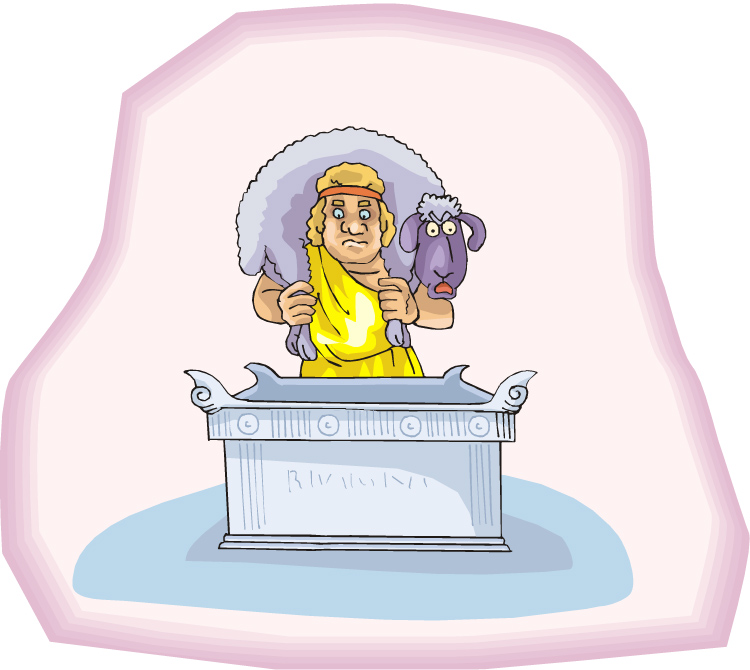
Acts 21:23–27, Vow. When Paul offered a sacrifice, is this proof that the sacrificial system is still in force today, even after the death of Yeshua the Messiah on the cross? Some people say yes despite what the writer of Hebrew’s lengthy discussion about how Yeshua’s death replaced the sacrificial and Levitical systems (Heb chapters 8–11; 10:10).
The rituals that Paul and his fellow Israelites did in Acts 21 actually fits the description of one who is coming out of a Nazirite vow (see Num 6:1–21). This was a sin offering and was the only way that the Torah allows one who has taken a Nazirite vow legally to terminate his vow to Elohim. A sacrifice was to be made at the door of the tabernacle (later the temple) by a priest.
Today, one can’t technically do a Nazarite vow, since there is no way legally to come out of it unless, of course, one stays a Nazirite until he dies. This is because there is no tabernacle or temple, and there is no Aaronic priest who is available to make the sacrifice. However, in Paul’s day, the priesthood still existed, and the temple still stood.
The sacrifice for coming out of a Nazarite vow is the only example of a disciple of Yeshua performing any sacrifice after Yeshua’s resurrection. Therefore, this sacrifice was a special exception for believers doing a sacrifice, else how could one legally come out of a Nazarite vow?
Why would Paul involve himself in a sin-sacrifice in Acts 21:24 after the death of Yeshua? We mustn’t read too much into the text. It is true that coming out of a Nazarite vow involved a sin offering. However, Acts doesn’t say that Paul was coming out of his own Nazarite vow. What the text says is that he was acting as a wealthy patron—an act of charity—for four individuals who, presumably were unable to afford the costs of paying for the necessary sacrifices to exit a Nazarite vow.
Admittedly, this is a perplexing passage. None of the Bible commentaries I examined on this text could give an adequate explanation as to why Paul would involve himself in this particular ceremony to prove to the Jerusalem mob that he was Torah-observant. The Acts text just doesn’t give us enough background information on the subject. One thing seems certain though. Paul was not making a sin offering for himself. His paying for the sacrifices of the Nazarites seems to have been a public relations gesture to appease those in the Jewish mob who were slandering him. It is a logical overreach and reading into the text to take Paul’s act of charity as him making a doctrinal statement favoring the continued validity of the sacrificial system after the death Yeshua, especially in light of what the other apostolic writers had to say about Yeshua’s fulfilling that system by his death. Certainly, the writer of Hebrews makes this point abundantly clear.
Acts 21:25, Observe no such thing. The phrase “that they should observe no such thing, except” is a dubious one and is not found in all the oldest and reliable Greek NT manuscripts. I suspect this is an example where the KJV got it wrong. My NKJV has a footnote attached to this phrase saying that it’s not found in the Alexandrian family of NT texts. Furthermore, it’s not in the Aramaic Peshitta. Therefore, I suspect that this phrase was a scribal addition and was not in the original autographs, especially since it is inconsistent with the rest of the Scriptures including the writings of Paul.
An Overview of the Sacrificial System and Its Relevance to YOU
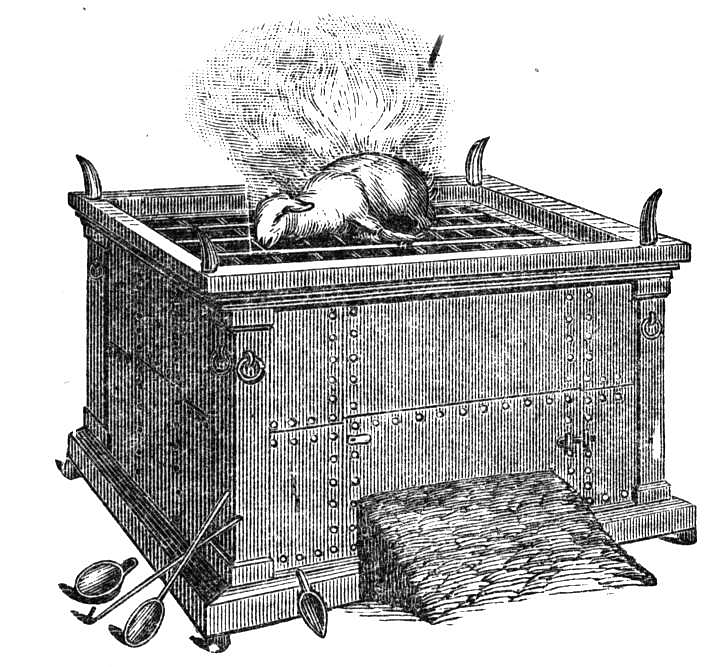
Leviticus 1–7
Although Jewish and Christian scholars disagree about whether the sacrifices were to cease after the coming of the Messiah, as Edersheim points out, all agree that the object of a sacrifice was substitution for the offender (The Temple – Its Ministry and Service, p. 90). He also notes that the Jewish fathers along with the Scriptures that all these substitutionary sacrifices pointed to none other than the Messiah. This understanding is especially expressed in the proto-rabbinic biblical Aramaic commentaries or Targumim (e.g. Tarum Jonathan and the Jerusalem Targum; ibid., p. 92). Later rabbinic sages, in light of the rise of Christianity, were loath to accept this interpretation and, to this day, pretend it was never the belief of their ancient predecessors.
As the Tanakh progresses, the concept of the substitutionary sacrifice as it relates to the sinner and to the Messiah expands and unfolds. The unity of the Tanakh in this regard and its progression of revelation on this subject must be taken into consideration when studying the sacrifices listed in Leviticus and the rest of the Torah if we are to understand completely the biblical concept of substitutionary sacrifice as well as the Messianic prophecies. The concept of sacrifice in the Tanakh point us prophetically in progressive stages to the sin atoning death of the Messiah on behalf of sinners. Such passages in the Tanakh as Pss 2, 22, 35, 69, 72, 89, 110, 118 along with Isa 52:13–53:12 (many other scriptural passages could be cited here as well) point undeniably to the Person and work of Yeshua the Messiah including his suffering and glorification. The apostolic writers understood these prophecies and how Yeshua fulfilled them perfectly (e.g. Isa 52:13–53:12 cp. Heb 9:11–15; 10:4–7, 1; etc.), and this understanding forms the basis for the New Testament, which the authors thereof refer to as The Testimony of Yeshua (Rev 1:9; 6:2; etc.).
Brief Overview: Six Types of Offerings (Heb. korban) Offered on the Altar (Lev 1-7)
Burnt or Elevation (Heb. Olah) Offering (Lev 1:3–17)
The olah or ascending offering signified the offerer giving himself up totally, wholly ascending or complete surrender to Elohim. The priests offered up this sacrifice up twice daily—the morning and evening (Exod 29:38–42; Num 28:1–8). This offering was always a male animal whose blood was to be sprinkled around the altar. The offerer was to lay his hands on the head of the animal before it was slaughtered symbolizing substitutionary atonement for sins. The offering would be accepted as a sweet aroma by Elohim.
Continue readingThe Sacrificial System, Yeshua and the Saint
There’s so much in the first few chapters of Leviticus, that I hardly know where to start. Here are a few of my notes on this wonderful section of Scripture. —Natan
Leviticus 1:5, He shall kill. The sinner must kill the animal to be sacrificed as an atonement for his sin. The reinforces upon the individual’s heart and mind the gravity of his sin and the consequences there of upon an innocent animal, which symbolically pointed to the death of Yeshua, the Lamb of Elohim, upon the cross, who had to die for each person’s sins. If killing an innocent animal brings grief to a person’s heart, then how much more the death of Yeshua, the Son of Elohim?
Sprinkle. Heb. word zaraq means “to scatter, sprinkle, toss, throw, scatter abundantly, strew.” The sprinkling of the blood of the sacrificed animal on and around the altar of sacrifice (and elsewhere in the tabernacle as well) is mentioned numerous times in the Torah (e.g. Exod 24:6; 29:16; Lev 1:11; 3:2, 8, 13; 4:6,17; 5:9; 7:2). The blood was even sprinkled on the people (Exod 24:8), and on Aaron and his sons (Exod 29:20–21). This is a prophetic picture of Yeshua bleeding, Continue reading
The blood of animals vs. the blood of Yeshua
Hebrews 9:13–14, Purifying the flesh…cleansing your conscience. The Levitical sacrificial system was never able to atone for sin in the full sense. These sacrifices were effective only temporarily in that they had to be continually repeated.
In reality, these sacrifices never mitigated YHVH’s judgment against sin. The Levitical sacrifices simply covered over sin, so that the sinner could stand before Elohim without being consumed by his righteous judgments. But only Yeshua’s death could satisfy Elohim’s judgment against sin permanently in the life of the believer. Only his atoning sacrifice can thoroughly wash away our sins, remove the death penalty, which is the wages or penalty of sin, and cleanse the sinner of the guilty conscience which resides in his personal spirit, so that one could “serve the living Elohim” with a clean slate.
Sin can contaminate the spirit of man, which houses the conscience of man (2 Cor 7:1; see notes at Col 3:10). Only the blood of Yeshua can miraculously cleanse our soul (the mind, will and emotions) and spirit of a person and bring us to perfect holiness in the fear of Elohim (ibid.) This Yeshua did in a spiritual sense in the spiritual temple in heaven, which is greater than the physical temple on earth, which was a mere copy or shadow of the one in heaven (Heb 8:3–6).
The cleansing that the Levitical sacrificial system offered was physical and external, while the one Yeshua offers through the heavenly temple gives internal cleansing.
A Riddle: What is as bitter as wormwood and as sweet as honey at the same time?
I got this email question the other day from Rick who teaches about the Tabernacle of Moses in his church. Allow me to share my answer with all of you. — Natan
While teaching on the offerings when I presented the “meal offering” I had a few questions. Since the meal offering was fine flour, green ears, frankincense, oil, or salt, I mentioned that there was not supposed to be any leaven or honey put on the sacrifice. Questions follow;
- Why couldn’t honey be put on the offering?
- I was also asked “no shedding of blood there is no remission of sin”? I think I know why this is, and that is, that this is a meal offering of fellowship and not for trespass or sin offering. Am I correct in my thinking?
I have looked for the answers to both these and can’t seem to find the answers to either. Can you help? I appreciate your answers to questions I have had so far and am thankful that I have someone that I can call on. I think I have as much curiosity about a deeper study as my class does. Any help, I would be grateful.


